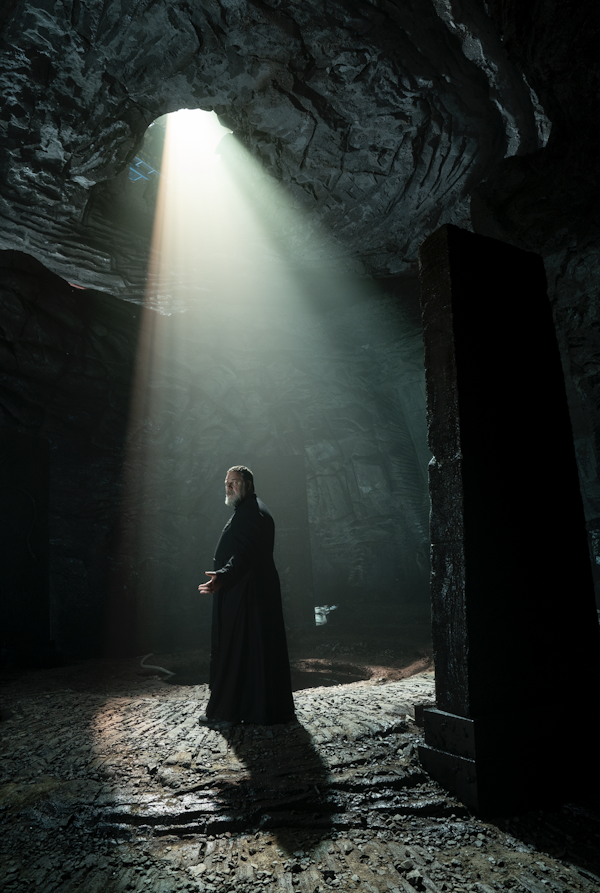What was most weird about The Pope's Exorcist is not so much the antics of the demons, but the fact that a genuine historical figure like Father Gabriele Amorth has been made into an Indiana Jones-like action figure, doing battle with the forces of hell. Father Amorth, whose books I have read, died less that a decade ago. But here he is in a universe which never existed. In 1987, when the film takes place, the real life pope was St. John Paul II. In the film it is an unnamed pontiff with a beard played by the still handsome Franco Nero. So Fr. Amorth, played by Russell Crowe, is placed in a purely fictional, make-believe setting. It was very strange to watch. Crowe does an excellent job of recreating the humble, learned priest; they have him riding a motor scooter and taking swigs from a flask. I have no idea how true that is. Everything he says in regard to the Catholic Faith seems to be accurate; I just wish he could have been placed in a better film, one more worthy of his talents and the character he is portraying.
There is a fairy-tale quality to the movie so that at times I felt I was watching a Tolkien-based story. Set in a castle in Spain, Crowe's Father Amorth and a young Spanish priest discover the hidden records of the Spanish Inquisition which prove to all that demons were involved. Historically, I found so many flaws in this setup but to people with no historical background it might be compelling. But I never heard that there was any attempt to hide the records of the Inquisition; it was all fairly out in the open; most executions were public. For me, the film is the Black Legend in overdrive, although from what we know of the Inquisition, it was indeed pretty black.
From The Conversation:
The film’s protagonist, Father Gabriele Amorth (Russell Crowe), is based on a real Catholic exorcist who was a founding member of the very organisation condemning the movie as inaccurate. So cinema-goers had fair warning that it would be far from uncontentious. Promotional material for the film did not promise a reflection on exorcism in the modern era, but presented an Indiana Jones-style figure in a cassock, brandishing a crucifix instead of a whip.
The film itself lived up to both these fears and expectations. A classic fusion of action and horror, it fits squarely into the exorcist genre with levitation, twisting heads and gravelly-voiced demons speaking through the wracked bodies of helpless children. The plot moves through some of Father Amorth’s most memorable reported cases, in particular a struggle with a demon the church had supposedly battled in previous centuries. At times there are shades of the Da Vinci Code, with Vatican cover-ups, conspiracies and ecclesiastical power play. Add into the mix secret chambers hiding cobweb-strewn skeletons and dark secrets and it’s squarely in Temple of Doom territory. (Read more.)
I would not recommend The Pope's Exorcist to anyone with any past
connections to the occult, or anyone with sensitivities to blood and
gore. However, while the film features bad language and disturbing
blasphemy, all coming from a demon, it is not worse than most of the fare
served up on streaming video services, such as Netflix and Prime. For that matter, I
actually heard worse things at grad school parties at SUNY Albany, all
of which hastened my decision to seek refuge in a Carmelite cloister. Of
Russell Crowe's films I do think Gladiator is more disturbing than The Pope's Exorcist for the violence and subject matter. The Pope's Exorcist features genuine sacramentals and prayers of the Church, with a priest telling people to pray and have faith. It is as if all the evil he must battle in the film is an allegory of what we must face in the world of today. And the main point of the film is that enormous evil is unleashed when those who are consecrated to God turn from His will.


















No comments:
Post a Comment